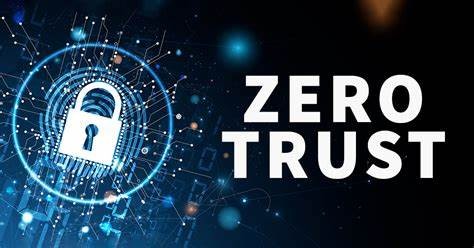Transforming Digital Security with Zero Trust Architecture
Key Takeaways
- Understand the core principles behind Zero Trust Architecture and its importance in modern cybersecurity.
- Discover how Zero Trust provides a robust framework against current security threats.
- Learn how adopting Zero Trust can bolster your organization’s security and compliance posture.
- Examine real-world examples and case studies of effective Zero Trust solutions.
Introduction to Zero Trust Architecture
In today’s digital age, where cyber threats are increasingly sophisticated and persistent, the traditional approach to network security is rapidly becoming obsolete. Organizations can no longer depend exclusively on perimeter defenses and are moving to more advanced tactics such as zero trust architecture to safeguard sensitive data and key infrastructure. This innovative approach operates on the fundamental principle of “never trust, always verify,” reinforcing robust security protocols at every access point. With this strategy, enterprises are empowered to lean towards innovative solutions offered by industry leaders like Versa Networks. These solutions safeguard data infrastructure comprehensively without compromising accessibility or performance.
Core Principles of Zero Trust
At the core of zero-trust architecture are principles fundamentally altering how access control and data security are executed and optimized across enterprises. Micro-segmentation involves breaking down networks into smaller, manageable segments to implement more granular and precise access controls. This segmentation reduces potential lateral movement within the network, effectively minimizing possible breach zones. Furthermore, the concept of least privilege guarantees that people and systems only have access to data and resources required for their specified jobs, considerably lowering the danger of insider attacks. Furthermore, continuous real-time monitoring and detailed logging are integrated, swiftly identifying and mitigating potential threats as they arise, thus maintaining enhanced operational security across the board.
Why Zero Trust Matters in Cybersecurity
Zero-trust architecture is redefining perceptions and approaches toward cybersecurity. By deploying this model, organizations can dramatically reduce their attack surfaces, minimizing the potential for unauthorized access to sensitive data and systems. A recent report indicates that zero trust is increasingly becoming a cornerstone in contemporary security frameworks due to its ability to treat internal and external networks with consistent scrutiny and diligence. This architectural approach directly addresses and mitigates vulnerabilities inherent in traditional security models, providing comprehensive protection against an ever-evolving landscape of cyber threats.
Implementing Zero Trust in Organizations
The successful adoption of zero-trust architecture requires a strategic, phased approach considering an organization’s unique needs and existing infrastructure. Initially, businesses must thoroughly assess their current security status, identifying vulnerabilities and areas that need enhancement. Once evaluated, defining robust access policies becomes crucial, incorporating technologies that bolster zero trust principles, such as advanced identity and access management ( AM) solutions. An exemplary case is Google’s BeyondCorp initiative, which transitioned its security model from a traditional perimeter-centric approach to a comprehensive zero-trust framework, dramatically enhancing network security and reducing potential vulnerabilities.
The Role of Zero Trust in Compliance
Compliance with regulatory standards is a significant consideration for many organizations, and robust data protection and privacy mechanisms form the core of zero-trust architecture. This architecture offers complex control mechanisms that easily comply with demanding regulatory criteria like the General Data Protection Regulation (GDPR) and the California Consumer Privacy Act (CCPA). A detailed exploration of ZDNet underscores how the zero-trust model facilitates compliance by ensuring consistent data protection mechanisms are applied. It preserves data integrity while highlighting its immeasurable value in efficiently fulfilling legal obligations.
Challenges and Considerations
While the advantages of adopting Zero Trust are well documented, its implementation poses several challenges that organizations must carefully navigate. Comprehensive education and training programs are required to ensure smooth integration at all organizational levels. Additionally, scalability is a pressing concern as network infrastructures expand. Maintaining a consistent zero-trust posture amidst this growth necessitates considerable resource investment and strategic planning. Furthermore, integrating existing legacy systems and transitioning them to align with Zero Trust principles can present complexities that require adept handling to ensure successful architectural integration and security optimization.
Future Prospects of Zero Trust
The future landscape of zero-trust architecture looks exceptionally bright and promising as many enterprises acknowledge and implement its transformative security capabilities. The surge in remote work and the growing reliance on cloud-based services and decentralized IT solutions underscore the critical need for a robust security framework to adapt to these evolving environments.
Based on the “never trust, always verify” philosophy, zero trust is becoming a global standard in enterprises’ digital transformation journeys. This strategy necessitates rigorous identity verification for every person or device attempting to access network resources, whether within or outside the organization’s perimeter.
As businesses embrace these new paradigms, the demand for sophisticated zero-trust solutions will escalate sharply. This rising necessity will spur developments in innovative technologies and practices within the cybersecurity field, encouraging a proactive stance against potential threats. Organizations will increasingly invest in tools that provide granular visibility, real-time monitoring, and automated response capabilities, enabling them to create a resilient cybersecurity posture.
Moreover, as regulatory frameworks evolve and cyber threats become more sophisticated, adopting zero trust will help companies enhance their security measures and enable compliance with industry standards and regulations. This multifaceted approach to security will ultimately drive further innovation and advancement in cybersecurity strategies, making zero trust an essential framework for organizations looking to safeguard their sensitive data and ensure a secure operational environment in the years to come.
Conclusion
Zero trust architecture is not merely a fleeting trend; it represents a fundamental strategic transformation an organization needs to succeed in today’s rapidly evolving digital environment. At its core, zero trust is grounded in the “never trust, always verify,” which means trust is never assumed based on location or prior authenticity. Instead, every access request—internal or external—must be rigorously verified, and access is granted based on the least privilege necessary for the task at hand.
By implementing zero-trust frameworks, businesses can fortify their defenses against various cyber threats, from sophisticated external attacks to insider threats. This approach entails continuous monitoring and validation of user identities, device security postures, and access request context. Furthermore, zero trust helps firms comply with severe data protection standards such as GDPR and CCPA, which require tight data management and access controls.
As we look to a future marked by swift digital transformation, where remote work, cloud computing, and the Internet of Things (IoT) are becoming increasingly commonplace, adopting zero-trust practices will be pivotal in ensuring the security of enterprise networks. Organizations can mitigate risks by prioritizing data integrity, fostering operational trustworthiness, and enhancing resilience against evolving cyber threats. It is increasingly clear that Zero Trust is not just a security model but a crucial element of a comprehensive strategy to safeguard the future of business operations in a complex digital landscape.
Also read: Safe Learning Environments







